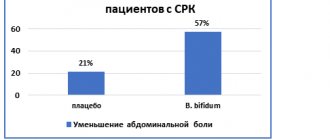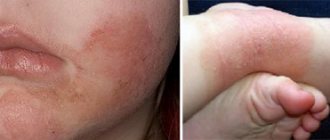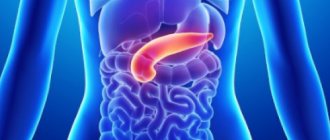Treatment of any intestinal pathology includes not only a medication component, but also a certain nutritional system. Crohn's disease is no exception; the diet in this case is not strict, it consists of foods that are familiar to us. In this case, the goal of such specific nutrition is to provide the most gentle chemical, thermal and mechanical effects on the intestines.
General rules
Crohn's disease is a chronic disease that causes transmural granulomatous inflammation of the intestine, which can be localized in any part of the tract - from the mouth to the anus. However, damage to the distal small intestine is more common. The main causes of the disease are considered to be genetic predisposition and an inadequate immune response, which leads to chronic inflammation of the gastrointestinal tract, tissue damage and the appearance of deep ulcers. The disease progresses in waves with alternating remissions and exacerbations. Patients are concerned about diarrhea (sometimes with blood), nausea, abdominal pain, loss of appetite, weakness and fatigue, and weight loss.
Deep (transmural) damage to the intestine leads to serious complications - fistulas and strictures . The resulting abscesses in the intestinal wall lead to the formation of fistulous tracts between the intestine and other organs or intestinal loops. The condition of the patients is serious: they are worried about constant pain, diarrhea , anorexia , weight loss and periodically rising temperature. If the ulcers heal, fibrous strictures remain and symptoms of obstruction appear. In such cases, intestinal resection is recommended. Drainage of formed abscesses and creation of anastomoses to bypass fistulas are also carried out.
Treatment consists of prescribing anti-inflammatory ( aminosalicylates ) and hormonal ( budesonide , prednisolone ) agents. In moderate forms of the disease, glucocorticoids are administered intravenously and then orally. The treatment plan includes a diet with complete exclusion or limitation of milk and raw fiber (vegetables, nuts, seeds). It helps eliminate inflammation, promotes healing of ulcerated mucosa and replenishes nutrients.
There is no special diet for Crohn's disease, but the most suitable is Diet No. 4 , which is prescribed differentially at different stages of the disease. It involves the exclusion of foods that cause peristalsis, fermentation and putrefaction in the intestines. Nutrition for this disease is prescribed mechanically and chemically gentle with a high content of vitamins and protein. Strict adherence to the diet is important for malabsorption syndrome . Sometimes a minor diet violation can cause the condition to worsen.
In the acute stage, all vegetables and fruits are excluded. Decoctions and jelly from blueberries, bird cherry, black currant, chokeberry and pomegranate juice are widely used. Pomegranate peels are used in decoctions as an astringent.
Most patients have protein deficiency due to protein loss, anorexia and malabsorption, which leads to weight loss. In this regard, during any phase of the disease, nutrition should be as high in calories as possible due to protein.
It is also important to exclude additional sensitization by food allergens, so the diet should be hypoallergenic, excluding extractives, chocolate, cocoa, eggs, coffee, citrus fruits, red apples, strawberries, wild strawberries, baked goods, and industrial canned food. When remission is achieved, the diet is less strict.
Basic nutrition rules:
- Exclusion of products containing fiber (rye bread, vegetables, fruits, bran bread, whole grain). Fiber causes increased fermentation, and this increases the frequency of bowel movements. In the acute period of the disease with increased diarrhea, fiber is excluded, and then foods with low fiber content are introduced (potatoes, cauliflower, zucchini, pumpkin, semolina, rice). The fiber content is reduced by boiling, grinding and rubbing through a sieve, which allows you to include the necessary vegetables and fruits without compromising your health.
- Six meals a day, which are based on pureed, slimy soups, mushy, pureed and semi-liquid dishes.
- Boiled (steam) method of preparation.
- Increased protein content (on average 120-130 g, more precisely 1.3-2 g per kg of weight).
- Reducing fats that are poorly absorbed and have a laxative effect. They are limited at the beginning of treatment, and after the process subsides, the amount of fat is increased and evenly distributed over all meals.
- Small and frequent meals.
- Prohibition of eating hard and thick foods.
- Implementation of the water regime (1.5-2 l).
- Limit salt (8-10 g), as it causes irritation of the intestinal mucosa and loosening of stools.
During an exacerbation, the diet includes liquid and pureed porridges (rice, semolina) with water, since milk and broths are excluded. It is convenient to use porridge for baby food, but it must be diluted with water. It should be taken into account that buckwheat porridge enhances motor skills, so it is not recommended during an exacerbation.
Meat and fish dishes are included (in the form of boiled minced meat, steamed cutlets, quenelles and pates). Drinks include compotes and jelly, herbal infusions, chokeberry juice. A special place is given to products that reduce intestinal motility (jelly from blueberries, pears, quince, bird cherry, dogwood, strong black and green tea). You can eat baked apples. During an exacerbation, even boiled vegetables and all dairy products (sour cream, cheeses, cottage cheese) are excluded. For a month after an exacerbation, you need to strictly adhere to the diet, gradually moving to Table 4B and 4B .
Table 4B is assigned upon improvement. The diet remains the same, but the list of permitted foods is expanding. You can try introducing thin noodles, potatoes, boiled grated carrots, zucchini and cauliflower into your diet, but in limited quantities. Sour cream and kefir are carefully introduced, as well as a small amount of sweet berries. The diet is prescribed for 1.5 months until stool is completely normalized, then Diet No. 4B .
Table 4B is recommended during the recovery period. It includes vegetable fats and new products: cabbage and green peas, small quantities of beets, watermelon, raspberries, strawberries. The amount of butter is also increased to 15 g. Dishes are prepared boiled or steamed, and also baked in the oven; food is served mainly in unchopped form.
During the period of stable remission, you can eat boiled vegetables that do not contain a large amount of fiber: broccoli, carrots, cauliflower, zucchini, onions in dishes. Multivitamin supplements can help fill nutritional deficiencies.
This diet is used for several months, and when the condition improves, undiluted boiled vegetables, lump boiled meat and crumbly porridges can be introduced into the diet. Unprocessed dishes should gradually replace pureed ones. A zigzag transition to a new diet is possible: new dishes are consumed 2 days a week, and the usual diet on the remaining days.
Selecting nutrition for this disease is not an easy task and depends a lot on the person’s endurance and observation. At first, to select foods, it is advisable to keep a food diary, in which all the foods consumed during the day and the intestinal reaction to them are recorded. In this way, you can create an individual diet with dishes and products that are well tolerated.
In severe cases of the disease, persistent diarrhea and exhaustion of patients, parenteral nutrition and enteral tube feeding are prescribed: alvesin , aminopeptide , aminosol , cosylate , vamin , casein hydrolysate , nutrichim , isocal . This diet is indicated in the presence of intestinal fistulas.
When to see a doctor
The symptoms of Crohn's ulcer disease are similar to many other pathologies. To diagnose it, you need a comprehensive, comprehensive examination. The disease is most often diagnosed by a specialist such as a gastroenterologist.
You should consult a doctor if the following phenomena occur:
- frequent diarrhea that does not go away;
- incessant pain in the gastrointestinal tract;
- rapid weight loss without objective reasons;
- traces of blood in the stool.
In all these cases, you must make an appointment with a gastroenterologist. A gastroenterologist will conduct an in-depth diagnosis of the disease, prescribe treatment, and, if necessary, give a referral for consultation to other specialists.
A general examination will also be carried out, laboratory and instrumental tests will be prescribed. In difficult cases, doctors of other specializations may be involved. For example, you may need to consult an infectious disease specialist, surgeon or coloproctologist. All these and many other specialists work at JSC “Medicine” (clinic of academician Roitberg).
Authorized Products
Diet No. 4B is suitable for constant nutrition of patients. The basis of her diet:
- Soups in a weak broth with cereals (except millet), vegetables and noodles. Of the vegetables, carrots, zucchini, pumpkin, potatoes and cauliflower are most often well tolerated, and if tolerated well, white cabbage and green peas are allowed, but in boiled form.
- Stale wheat bread, you can eat dry biscuits and biscuits.
- Choose lean meat (veal, beef, chicken, turkey) and prepare steam cutlets, meatballs and meat in pieces. Fish is also low-fat boiled, stewed or baked in foil without a crust.
- For side dishes you can try carrots, potatoes, pumpkin, zucchini and cauliflower. Prepare them boiled or steamed in the form of purees and casseroles. Some patients tolerate ripe tomatoes without skin well.
- Dishes from cereals (except pearl barley and millet) are prepared well boiled, first pureed, and then switched to crumbly porridges; boiled vermicelli is allowed. You can use instant water-based porridge for children, which is beneficial in its composition because it is enriched with vitamins and minerals. A specialized mixture for patients with IBD ( Nutrilon Pepti TSC ) is added to the finished porridge.
- Egg dishes (1-2 per day) - steam omelettes and soft-boiled eggs.
- Dairy products are excluded, but if well tolerated, you can drink kefir on a limited basis and add freshly prepared cottage cheese and butter to dishes up to 10 g per meal.
- Jelly and decoctions of blueberries, bird cherry, dogwood, quince, black currant, compotes with pureed fruits, jelly, soufflé of sweet berries, baked and mashed apples and pears are allowed, but it all depends on individual tolerance.
- You can drink herbal teas, rosehip infusion, weak tea, and still water up to 1.5 liters per day. You can add diluted fresh juices.
Table of permitted products
| Proteins, g | Fats, g | Carbohydrates, g | Calories, kcal | |
Fruits | ||||
| quince | 0,6 | 0,5 | 9,8 | 40 |
| pears | 0,4 | 0,3 | 10,9 | 42 |
| dogwood | 1,0 | 0,0 | 10,5 | 44 |
| apples | 0,4 | 0,4 | 9,8 | 47 |
Berries | ||||
| blackberry | 2,0 | 0,0 | 6,4 | 31 |
| blueberry | 1,1 | 0,4 | 7,6 | 44 |
Nuts and dried fruits | ||||
| dried pears | 2,3 | 0,6 | 62,6 | 249 |
| dried blueberries | 0,9 | 0,7 | 72,3 | 309 |
Cereals and porridges | ||||
| buckwheat (kernel) | 12,6 | 3,3 | 62,1 | 313 |
| semolina | 10,3 | 1,0 | 73,3 | 328 |
| oat groats | 12,3 | 6,1 | 59,5 | 342 |
| cereals | 11,9 | 7,2 | 69,3 | 366 |
| white rice | 6,7 | 0,7 | 78,9 | 344 |
Bakery products | ||||
| white bread crackers | 11,2 | 1,4 | 72,2 | 331 |
Confectionery | ||||
| Maria cookies | 8,7 | 8,8 | 70,9 | 400 |
Raw materials and seasonings | ||||
| dried bird cherry | 8,4 | 0,0 | 16,8 | 101 |
Dairy | ||||
| acidophilus | 2,8 | 3,2 | 3,8 | 57 |
Cheeses and cottage cheese | ||||
| cottage cheese 0.6% (low fat) | 18,0 | 0,6 | 1,8 | 88 |
Meat products | ||||
| boiled beef | 25,8 | 16,8 | 0,0 | 254 |
| boiled veal | 30,7 | 0,9 | 0,0 | 131 |
| rabbit | 21,0 | 8,0 | 0,0 | 156 |
Bird | ||||
| boiled chicken | 25,2 | 7,4 | 0,0 | 170 |
| turkey | 19,2 | 0,7 | 0,0 | 84 |
Oils and fats | ||||
| butter | 0,5 | 82,5 | 0,8 | 748 |
Non-alcoholic drinks | ||||
| mineral water | 0,0 | 0,0 | 0,0 | — |
| green tea | 0,0 | 0,0 | 0,0 | — |
| black tea | 20,0 | 5,1 | 6,9 | 152 |
| * data is per 100 g of product | ||||
Fully or partially limited products
- In therapeutic nutrition, cereal products (popcorn, cereal breads), bread with added seeds, bran, rye and whole grain are completely excluded, since they injure the mucous membrane and cause bloating.
- Fresh bread and pastries that cause fermentation in the intestines.
- Radishes, onions, garlic, sorrel, turnips, radishes, spinach, and mushrooms are excluded.
- Sour berries and fruits, since they contain organic acids in large quantities, which enhance intestinal motility (cranberries, gooseberries, lemons, red currants, sour apples, cherries).
- The consumption of strong meat and fish broths is limited.
- Fatty meats, fatty fish and canned food, and any sausages are excluded. During the period of exacerbation, barley, millet, pearl barley, legumes and pasta are excluded.
- Milk and its products, since patients with inflammatory bowel disease often have intolerance. In addition, many authors believe that dairy products can cause Crohn's disease.
- Chocolate, jam, dried fruits, honey, sugar, carbonated drinks, kvass, alcohol (especially sparkling, champagne, beer). Kvass, cocoa and coffee with milk increase intestinal motility, and all drinks with gas cause bloating. It is necessary to limit the consumption of caffeine , which has a laxative effect.
Table of prohibited products
| Proteins, g | Fats, g | Carbohydrates, g | Calories, kcal | |
Vegetables and greens | ||||
| vegetables legumes | 9,1 | 1,6 | 27,0 | 168 |
| canned vegetables | 1,5 | 0,2 | 5,5 | 30 |
| cabbage | 1,8 | 0,1 | 4,7 | 27 |
| radish | 1,2 | 0,1 | 3,4 | 19 |
| turnip | 1,5 | 0,1 | 6,2 | 30 |
| beet | 1,5 | 0,1 | 8,8 | 40 |
| horseradish | 3,2 | 0,4 | 10,5 | 56 |
| garlic | 6,5 | 0,5 | 29,9 | 143 |
| spinach | 2,9 | 0,3 | 2,0 | 22 |
| sorrel | 1,5 | 0,3 | 2,9 | 19 |
Fruits | ||||
| bananas | 1,5 | 0,2 | 21,8 | 95 |
| melon | 0,6 | 0,3 | 7,4 | 33 |
| kiwi | 1,0 | 0,6 | 10,3 | 48 |
Berries | ||||
| grape | 0,6 | 0,2 | 16,8 | 65 |
Mushrooms | ||||
| mushrooms | 3,5 | 2,0 | 2,5 | 30 |
Nuts and dried fruits | ||||
| nuts | 15,0 | 40,0 | 20,0 | 500 |
| dried fruits | 2,3 | 0,6 | 68,2 | 286 |
| sunflower seeds | 20,7 | 52,9 | 3,4 | 578 |
| pumpkin seeds | 24,5 | 45,8 | 4,7 | 556 |
Cereals and porridges | ||||
| corn grits | 8,3 | 1,2 | 75,0 | 337 |
| pearl barley | 9,3 | 1,1 | 73,7 | 320 |
| Wheat groats | 11,5 | 1,3 | 62,0 | 316 |
| millet cereal | 11,5 | 3,3 | 69,3 | 348 |
| barley grits | 10,4 | 1,3 | 66,3 | 324 |
Flour and pasta | ||||
| pasta | 10,4 | 1,1 | 69,7 | 337 |
Confectionery | ||||
| jam | 0,3 | 0,2 | 63,0 | 263 |
| jam | 0,3 | 0,1 | 56,0 | 238 |
| candies | 4,3 | 19,8 | 67,5 | 453 |
| pastry cream | 0,2 | 26,0 | 16,5 | 300 |
| cookie | 7,5 | 11,8 | 74,9 | 417 |
| shortbread dough | 6,5 | 21,6 | 49,9 | 403 |
Ice cream | ||||
| ice cream | 3,7 | 6,9 | 22,1 | 189 |
Cakes | ||||
| cake | 4,4 | 23,4 | 45,2 | 407 |
Chocolate | ||||
| chocolate | 5,4 | 35,3 | 56,5 | 544 |
Raw materials and seasonings | ||||
| seasonings | 7,0 | 1,9 | 26,0 | 149 |
| mustard | 5,7 | 6,4 | 22,0 | 162 |
| ketchup | 1,8 | 1,0 | 22,2 | 93 |
| mayonnaise | 2,4 | 67,0 | 3,9 | 627 |
Dairy | ||||
| milk | 3,2 | 3,6 | 4,8 | 64 |
| kefir | 3,4 | 2,0 | 4,7 | 51 |
| sour cream | 2,8 | 20,0 | 3,2 | 206 |
Cheeses and cottage cheese | ||||
| cheese | 24,1 | 29,5 | 0,3 | 363 |
Meat products | ||||
| pork | 16,0 | 21,6 | 0,0 | 259 |
| ham | 22,6 | 20,9 | 0,0 | 279 |
Sausages | ||||
| dry-cured sausage | 24,1 | 38,3 | 1,0 | 455 |
| sausages | 10,1 | 31,6 | 1,9 | 332 |
| sausages | 12,3 | 25,3 | 0,0 | 277 |
Bird | ||||
| duck | 16,5 | 61,2 | 0,0 | 346 |
| goose | 16,1 | 33,3 | 0,0 | 364 |
Fish and seafood | ||||
| dried fish | 17,5 | 4,6 | 0,0 | 139 |
| smoked fish | 26,8 | 9,9 | 0,0 | 196 |
| canned fish | 17,5 | 2,0 | 0,0 | 88 |
Oils and fats | ||||
| vegetable oil | 0,0 | 99,0 | 0,0 | 899 |
| animal fat | 0,0 | 99,7 | 0,0 | 897 |
| cooking fat | 0,0 | 99,7 | 0,0 | 897 |
Alcoholic drinks | ||||
| whiskey | 0,0 | 0,0 | 0,4 | 235 |
| vodka | 0,0 | 0,0 | 0,1 | 235 |
| cognac | 0,0 | 0,0 | 0,1 | 239 |
| liquor | 0,3 | 1,1 | 17,2 | 242 |
| beer | 0,3 | 0,0 | 4,6 | 42 |
Non-alcoholic drinks | ||||
| bread kvass | 0,2 | 0,0 | 5,2 | 27 |
| coffee with milk and sugar | 0,7 | 1,0 | 11,2 | 58 |
| Pepsi | 0,0 | 0,0 | 8,7 | 38 |
| sprite | 0,1 | 0,0 | 7,0 | 29 |
Juices and compotes | ||||
| apricot juice | 0,9 | 0,1 | 9,0 | 38 |
| grape juice | 0,3 | 0,0 | 14,0 | 54 |
| plum juice | 0,8 | 0,0 | 9,6 | 39 |
| * data is per 100 g of product | ||||
Classification
Despite the fact that Crohn's disease can affect any part of the digestive system, there are several most common locations:
- ileocolitis (damage to the ileum and colon) - 42% of cases;
- ileitis (damage to the ileum) - 33%;
- colitis (colon damage) - about 20% of cases.
Additionally, isolated damage to the small intestine, damage to the anal area and multiregional inflammation involving the upper gastrointestinal tract (stomach, etc.) - 5% - are distinguished.
On the website msdmanuals.com you can independently calculate the degree of activity of Crohn's disease by assessing the presence of certain symptoms and complications.
Menu (Power Mode)
It must be remembered that the diet must be followed for a long time and new foods must be introduced carefully. With six meals a day, the menu should be varied and include alternating dishes from chicken, fish, beef and, with normal tolerance, cottage cheese, as well as various cereal dishes. You can include eggs daily. When the process subsides, add pureed vegetables with low fiber content (pumpkin, zucchini, potatoes).
| Breakfast |
|
| Lunch |
|
| Dinner |
|
| Afternoon snack |
|
| Dinner |
|
| For the night |
|
| Breakfast |
|
| Lunch |
|
| Dinner |
|
| Afternoon snack |
|
| Dinner |
|
| For the night |
|
| Breakfast |
|
| Lunch |
|
| Dinner |
|
| Afternoon snack |
|
| Dinner |
|
| For the night |
|
Diet recipes for Crohn's disease
When starting to prepare different dishes, you need to know some rules and technological techniques. For dietary nutrition, boiled meat is passed through a meat grinder, and vegetables are pureed. Pureed soups are recommended, in which cereals are boiled until soft, pureed and boiled again. Porridges take longer to cook than usual, and to reduce the cooking time, you can use ground cereal or cereal flour and cereal resins in a coffee grinder.
Vegetables and chopped dishes are simmered in a saucepan under a lid, with 1/3 of the liquid added. Juicy fruits are simmered without liquid (in their own juice). Steam cooking is used with the lid closed, which reduces the loss of nutrients. You can use a wire rack or sieve for this.
To reduce the content of extractives and protein, digestion is recommended. When cooking a large piece of meat, extractive substances and proteins are preserved, and the broth turns out to be unsaturated. When baking, the food is cooked until half cooked and then baked until a light crust forms. When baking, you can add sauce, eggs, and sour cream to meat and vegetable dishes.
First meal
Clear soup with meatballs
The soup is prepared in water. Place finely chopped potatoes and carrots into boiling water. Bring them to half-cookedness, add salt and add beef (minced chicken) meatballs, add bay leaf and bring to readiness.
Potato, cauliflower and carrot soup
Boil all the vegetables and onions, drain the broth, and blend the vegetables in a blender, leaving a few whole cabbage inflorescences. Dilute the vegetable puree with a decoction of vegetables, add salt and boil. Dip whole cabbage inflorescences into the finished soup, add butter and croutons.
Second courses
Liver soufflé
Remove the films from the liver and grind it into a paste in a blender, add chopped onion and a piece of soft butter. Beat the yolks and whites separately (until strong foam). Add one at a time to the liver mass, lightly salt. Place into molds, or into one large mold. Bake for 30 minutes at 200 degrees. Garnish: steamed grated carrots with unrefined sunflower oil.
Minced chicken casserole with zucchini
You can use ground chicken or turkey. Peel the zucchini, remove the seeds, peel the onion and pass everything through a meat grinder. Mix with prepared minced meat. Add eggs, salt. Place the mixture into a baking dish. Bake for 40 minutes at 180 degrees. If desired, you can supplement the casserole with boiled carrots chopped in a blender and chopped herbs.
Snacks
Eggplant (zucchini) caviar
Bake the eggplants in the oven, pass through a meat grinder, first removing the skin. Add lightly sautéed onions and tomatoes (tomato paste). Beat in a blender, add salt and simmer a little.
Reviews and results
Looking through the reviews, we can conclude that selecting food products for this disease is not an easy task and depends a lot on the person’s endurance and observation. At first, to select foods, many kept a food diary, in which they recorded all the foods consumed during the day and the intestinal reaction to them. Thus, an individual diet was compiled with dishes and products that were well tolerated.
Of course, therapeutic nutrition has a positive effect on the condition of the gastrointestinal tract. By eliminating forbidden foods from the diet, patients achieved a reduction in pain and frequency of bowel movements, bloating and rumbling in the intestines. Many always strictly follow the diet and only slightly expand it if their health allows.
- “... I have been sick for a long time, and I came to the conclusion that it is necessary to exclude those foods that can cause deterioration or exacerbation. For me it is: whole milk (but I can tolerate goat milk well), ice cream, fresh pineapple, chocolate, Snickers and other sweets. Otherwise, during the period of remission I hardly follow a diet. The only thing that remains constant is oatmeal with water in the morning. I try to eat natural products: I bake my own bread, I make kefir and cottage cheese from goat’s milk myself, I eat homemade butter, and vegetables from my garden. Proper nutrition is very important for this diagnosis, but restrictions must be selected individually”;
- “... I try to exclude inherently dangerous products. I think everyone has foods that make them worse, but it's individual. I don't eat anything fried. My usual foods are rice, potatoes, buckwheat, lean meat (usually beef) and liver (I ate a lot when there was not enough iron), I rarely eat wheat and corn porridge. Low-fat sea fish is easier to tolerate, but salmon is difficult to digest. I make an omelette in the microwave. Once a week I allow low-fat cottage cheese with sour cream - I also tolerate it well. Sometimes there are deviations in the form of boiled sausage and sausages, but rarely. I only drink tea without sugar. This power supply scheme is quite satisfactory”;
- “... I made up my own diet, going through exacerbations and excluding intolerable foods. Of course, I don’t eat fried, smoked, cold or spicy. Only boiled meat and stewed fish. I buy veal and chicken. The porridge is mostly rice and buckwheat, for breakfast it’s oatmeal, I boil everything for a long time and add a piece of butter. There was a long “torment” with fruits and vegetables. It was not possible to introduce either an apple or a banana, in any form - immediately gas formation and diarrhea the next morning. With potatoes, bloating is also guaranteed, so I refused it altogether. Boiled carrots pass fine and just a little cabbage. I also had to exclude coffee and chocolate, which caused an exacerbation with bleeding. From dairy products I allow cottage cheese (I make it myself) and butter. I had to give up sweets, removed sugar altogether and gas formation became significantly less. I try to eat separately and drink filtered water.”
Causes
Crohn's disease (CD) develops when the immune system begins to attack the body's own tissues - the intestines and other digestive organs. However, the exact cause of the disease is unknown. There are several groups of factors that may be involved in the development of the disease:
- hereditary factors (if Crohn's disease is present in family members, the risk of the disease in relatives increases);
- genetic factors (in particular, mutation of the NOD2 gene, responsible for the synthesis of proteins involved in the work of innate immunity);
- infections (the influence of some bacteria and viruses on excessive activation of the immune response is assumed);
- immunological factors (directly, disorders of the immune system).
Additional risk factors may include:
- age (Crohn's disease often manifests itself before 30 years of age);
- excessive intake of non-steroidal anti-inflammatory drugs (NSAIDs), combined oral contraceptives (COCs);
- smoking;
- errors in diet.
Is Crohn's disease contagious?
Crohn's disease occurs due to a malfunction of the immune system. It's not contagious. However, if the disease is present in close relatives, the disease may manifest itself due to a hereditary factor.






